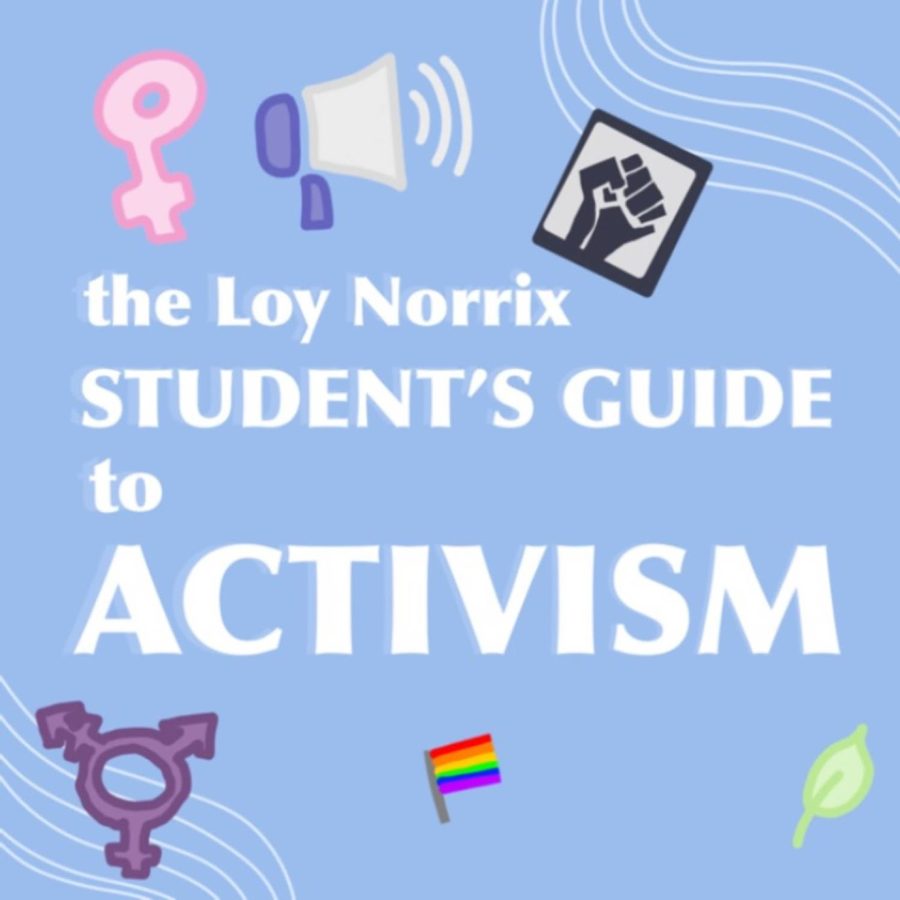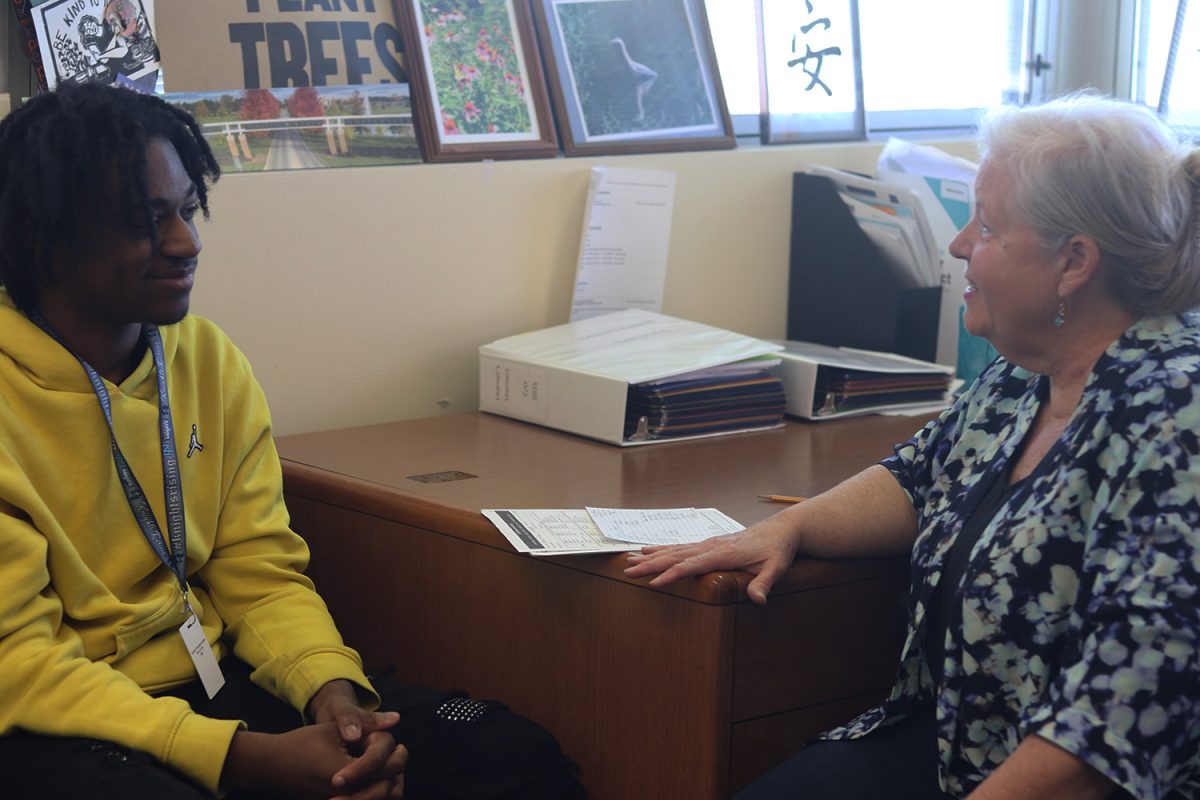The Loy Norrix student’s guide to activism
November 3, 2022
You’re young, opinionated and dedicated. You’ve always had differing views from the adults in your life, but it seems like there’s nothing you can do about it. You could join a rally or sign a petition, but you never actually know what’s happening around Kalamazoo or how to get involved.
For the Loy Norrix students who fit this description: this is your guide to being a better activist, despite your age and all the hindrances that come with it.
Stay informed
Staying up-to-date on current events and legislation is the first step. By knowing what’s happening locally, nationally and internationally, you’re making sure that you’re able to argue your beliefs, using current events as support. Even just scrolling through a few reliable news sources and looking at headlines will give you a brief run-down of current issues. Opinion articles and websites that compare both sides of an argument also can shed light on your own thoughts and beliefs.
Some reliable resources to use are NowKalamazoo, Bridge MI, Michigan State Legislature, CNN News, The New York Times, MLive, and the Pew Research Center.
Reflect on yourself
Even before you start advocating for social justice, it’s important to make sure that you’re actively improving yourself. Taking steps towards being a more open-minded and well-rounded person will inevitably lead to being a better activist overall. Sometimes, it’s more important that we’re first focusing on improving ourselves rather than society.
Making small changes to make sure that you’re not upholding the oppressive structures you’re fighting against is essential. If you’re not actively protesting these structures in your own actions, there’s no reason for anybody to listen to what you’re advocating for.
Recognizing your own privilege is an important step to take. Race, gender, socio-economic status, religion, and many other factors all play roles in the extent to which someone experiences privilege. If you don’t take the time to acknowledge your own privilege, then you’re going to end up sounding tone-deaf and inconsiderate.
It’s also important to know how your perspective influences your opinions. Since we’re all unique people, we’re all going to have different life experiences. Someone who was born into a wealthy position in a rural community versus someone who was born into urban poverty are going to have extremely different experiences, which will result in different opinions. Knowing that your opinions are informed by your experiences is essential in keeping an open mind and listening to others.
Also, take the time to listen to people. If you don’t know how to respond to people who ardently oppose your beliefs, then you’re not going to be successful. Some of the time, your critics can bring up valid points about the failures of a certain movement or proposal. It’s important that you take time to listen to their genuine complaints, even if you don’t agree with their beliefs.
Be specific
One of the biggest failures of student attempts at activism is failure to take direct action against the problem. The best way to do this is through making sure that you have a clear list of demands.
Instead of trying to tackle an all-encompassing problem, find an example of a way that problem affects people’s daily life and try to change that. Shouting about your discontentment doesn’t make much of a difference anymore – not enough people are going to listen to you and you’re not going to be able to inspire fundamental change.
For example, you could be trying to advocate for the rights of transgender people. Instead of just supporting the cause in general and spreading information about the lack of trans rights, you could directly protest Michigan’s House Bill No. 6454, a recently-proposed bill that would imprison parents who help their children with gender-affirming procedures. By shifting your focus to a more specific facet of transphobia, you’re more likely to encourage the change you’re advocating for.
Get involved
For many students, restrictions like lack of driver’s license, minimal income, other time commitments or simply confusion with where to participate stops them from being a powerful activist. Despite this, you can still donate small a amount of time or money to local activist organizations.
Organizations like OutFront Kalamazoo, Equality MI, the Kalamazoo branch of Planned Parenthood, and the Michigan Coalition for Immigrant and Refugee Rights have ways to donate money or sign up as a volunteer on their websites.
Taking Action
For many students, volunteering at organizations and adjusting their own daily habits still isn’t enough to feel like they’re actually making a difference.
If this is the case, there are ways you can take a more active position. Canvassing, which is spreading posters, flyers, and letters that promote your case, is one of these methods. Both pen-and-paper methods and using social media work well.
Tabling — which is setting up a stand or a table with information — is another method of gaining traction. Whether it be for collecting signatures or just spreading information, people will likely be intrigued by a table or stand they’ve never seen before. Of course, if you’re looking to set up a table at Loy Norrix, make sure that you have explicit approval from Principal Aguinaga to do so.
An additional strategy would be organizing a non-violent demonstration, such as a walk-out or a sit-in. Before attempting one of these, however, there are steps that you should take to try addressing the problem. If it relates directly to the school, going to Principal Aguinaga is the first step.
If this is still unsuccessful, going to the KPS board meetings is the next step. Meetings are held once or twice a month, and the full calendar can be found on the KPS website. With both of these steps, keep the previous tip of staying specific in mind. Don’t go to a meeting and expect administrators to read your mind and know exactly what school rules or procedures you want changed. Come with a specific list of demands, as well as your proposal for how the administrators should resolve the problems you’re noticing.
At this point, if you’re still unable to reach your goal, you would organize a walk-out or a sit-in. For this step, make sure that you’re not jumping to conclusions. If you haven’t already contacted the principal and other administrators, then immediately scheduling a protest that would disrupt the school day is unfair to the students and staff in the building. Taking direct action and not backing down from your opinions is important, but so is keeping Loy Norrix a safe environment.
Another thing to consider when taking action is involving a wider group of people. Whether that be through a large group of supporters or a select group of collaborators, making sure to involve other students is key to gaining traction.
Student artists, writers, and speakers at Loy Norrix are generally happy to help with the cause. Partnering with clubs also can help you appear more legitimate and professional because of your direct connection with the school. The flexibility of the rules for Loy Norrix students also makes it possible for you to begin your own school-sponsored club, with approval from Principal Aguinaga and a teacher as an advisor.
With more and more concerns about our society being raised, it’s important that teenagers know about the decisions being made in our nation and community and how they’ll be affected. For decades, young generations have pioneered activist movements that lead to substantial change worldwide. Although it can feel as though there’s very little teenagers can actually do, there are still ways that you can promote your beliefs and the social change you want to see.













flora harper • Nov 4, 2022 at 8:06 am
You can join young democrats to be more politically active!